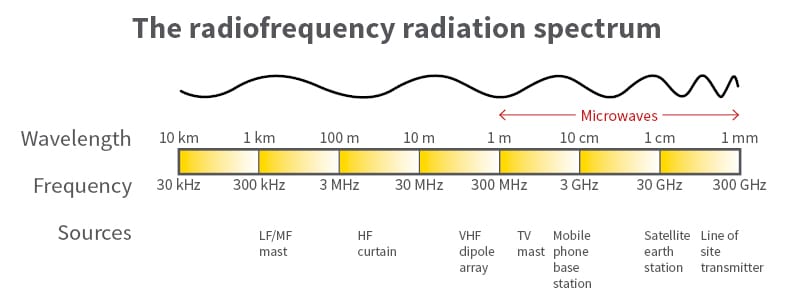5G Radiation and Epidermis Cancer

This article covers the topic of 5G radiation, which is a non-ionizing form of electromagnetic radiation. Because 5G radiation is so small, it does not have the ability to break chemical bonds in biological tissues or cause any modifications to cells. It is not known whether the effects of 5G radiation alter the risk of skin cancer, and there is no evidence that has been found to suggest that it could cause other disease.
Millimeter-wave radiation with high frequency
High-frequency millimeter wave radiation emitted by mobile phones and wireless networks can cause health issues to human beings. There are several ways that this radiation can cause harm. In some cases, the radiation can cause damage to a person's DNA. In other cases, it may cause damage to other areas within the body like the brain.
Recent research has shown that 5G technology could cause tissue heating. This is why researchers from the International Council on Non-Ionizing Radiation Protection (ICNIRP) has asked for a review of existing thermal and biological safety standards. The current standards for exposure do not protect people from extreme heat in the event of exposure to pulsed millimeter wave radiation.
5g radiation symptoms

There isn't a definitive answer yet to the question of whether 5G radiation causes skin cancer. However, it is believed that 5G RF EMFs behave as high-LET ionizing radiations. This means that they may cause excessive levels of free radicals in the skin. The FCC has not yet issued any specific guidelines about the potential dangers associated with 5G technology. 5g radiation symptoms on the subject continues.
Although there has been a variety of studies on the effects of higher-frequency radio waves on the human body however, their research has been limited in extent. However, there is concern over the effects of millimeter-wavelength exposure on oxidative stress and gene expression. These effects could be extended to the skin and various organs, including the brain.
Influence on other illnesses
An innovative new technology in wireless, called 5G, is rapidly gaining ground However, researchers are warning about its potential health risks. The technology will significantly increase the quantity of electromagnetic radiation that is found in our surroundings. This is a problem that has caused debate in several nations, including Switzerland. In September 2017 390 scientists and doctors supported a motion for a moratorium on 5G deployment. This motion was not heeded by the European Commission, which is in charge of controlling the use of technology like 5G.
In the end, , more research is needed to study the health implications of 5G. While we wait research has shown that 5G isn't causing the same negative effects in humans as radiation from older mobile networks. Also, it doesn't spread the new coronavirus type. Furthermore, it does not make people more vulnerable to infections caused by viruses.
Exposure measurement
Monitoring exposure to radiation from 5G is a crucial aspect of making sure that 5G networks are safe. There are 5g radiation symptoms to gauge exposure. One method is measuring the power of radio waves absorbed by human tissue. The other involves measuring the amount of radiofrequency energy released from an object. Radiation frequency energy (RF) is an energy field that is emitted directly from radio receivers.
The United States, the FCC has set a limit on the power density of mobile devices running 5G. These tests only determine power density at the distance of a few inches, and they do not require measurements of every beam. FCC does not require the measurement of each beam. However how much power is generated by each beam can be estimated using computer simulation. The worst-case scenario is selected depending on the design of each beam.
Study limitations
There's been plenty of discussion over the impact of 5G radiation on the health of people. In the case of 5G, for instance. Swiss Government, for instance, has produced an analysis that concludes 5G technology does not cause adverse health effects in the short-term, but there are no studies that have demonstrated long-term effects. However, this report also has a variety of issues, including biased reporting.
The frequency and power of radio waves that carry energy will depend on the frequency. The energy that is carried by a millimetre-wave will be identical to the frequency of radio waves currently, but they are much less visible and will be ideal for high-density settings, since they will not be obscured by walls or glass. High-density urban areas would require a large number of small, low-power sites, and suburban areas will benefit from 5G stations that operate at lower frequencies.
